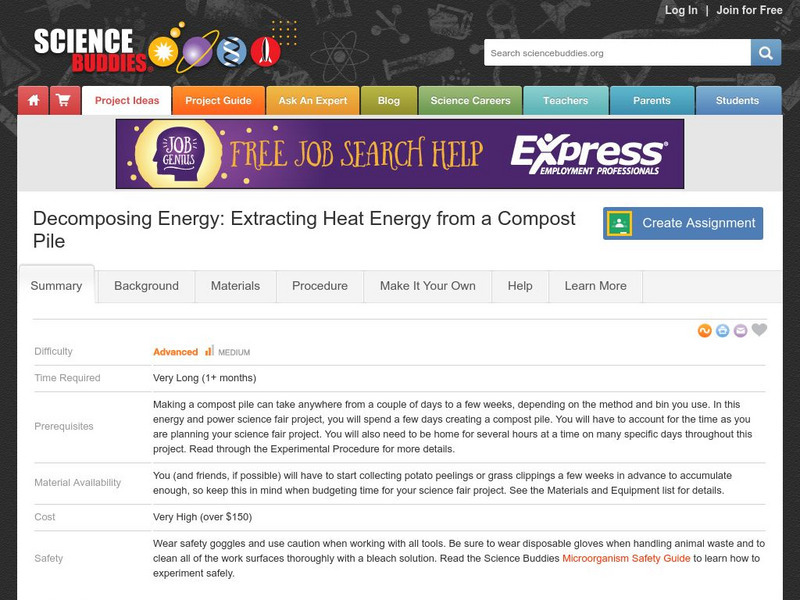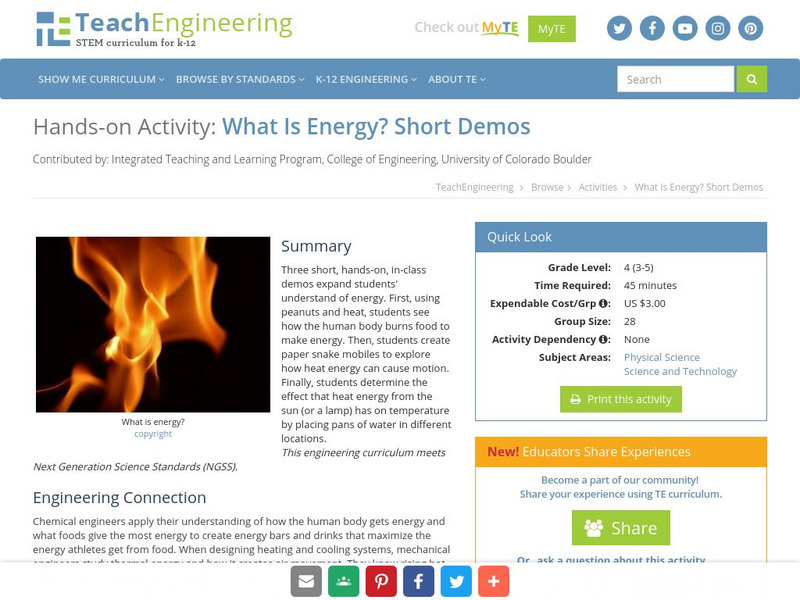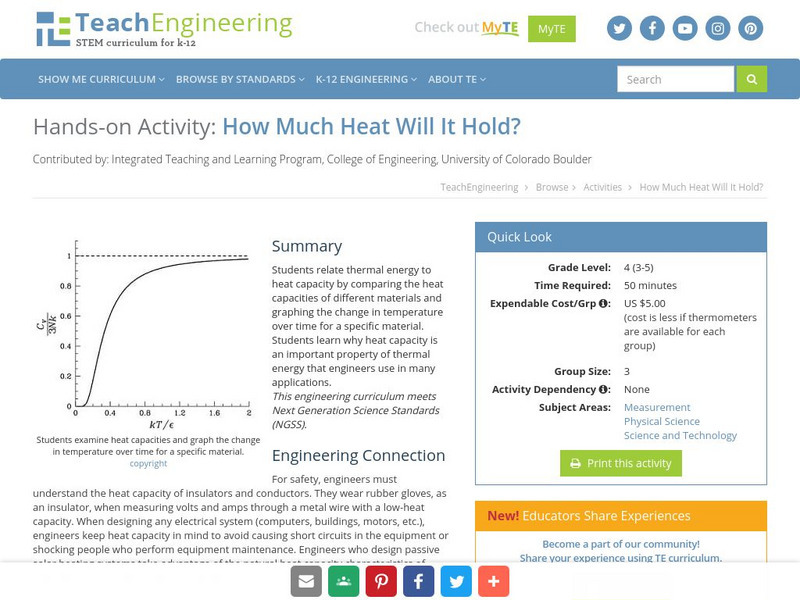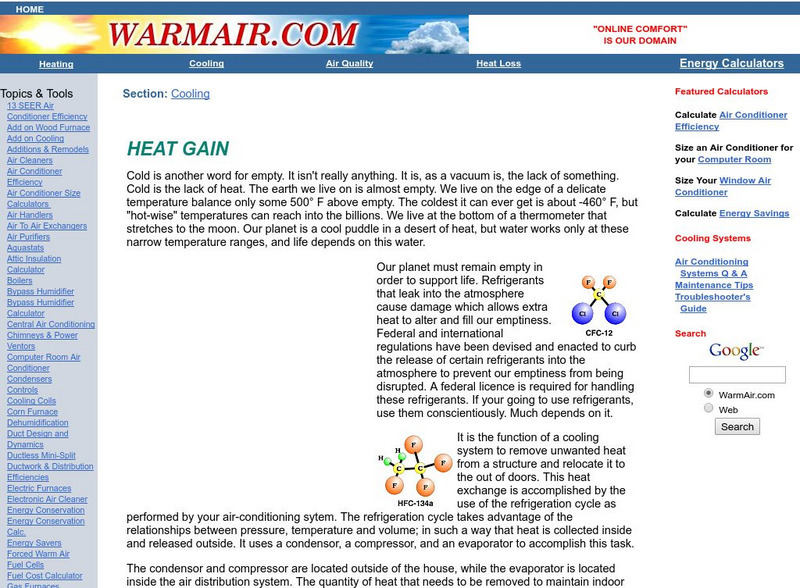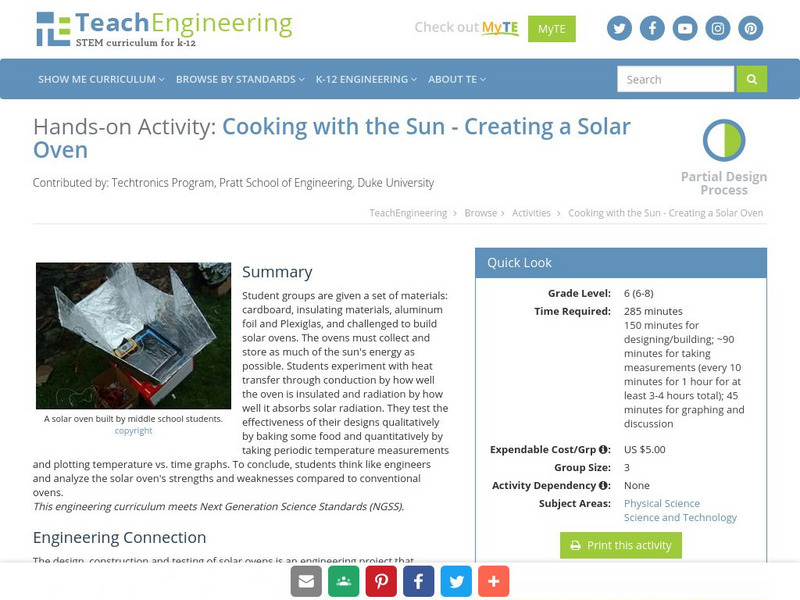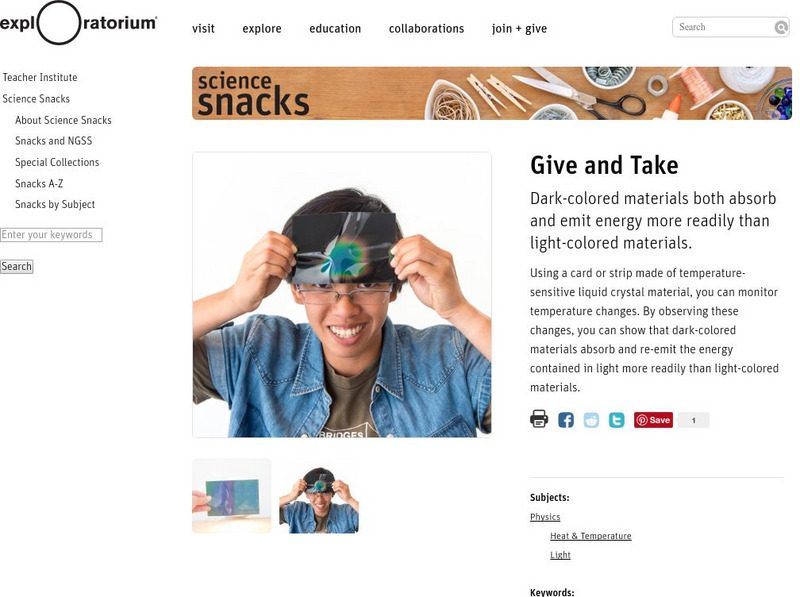Science Buddies
Science Buddies: Project Ideas: Decomposing Energy: Heat Energy From Compost
In this energy and power science fair project, the student will calculate the heat energy produced by an active compost pile, surrounding a tin can filled with water. The Science Buddies project ideas are set up consistently beginning...
University of Colorado
University of Colorado: Physics 2000: Bose Einstein Condensation: Temperature and Absolute Zero
From the Physics 2000 site, this page exemplifies their usual superb discussion of the concepts of heat, temperature, and absolute zero. Using an entertaining series of cartoon characters, the page gives a very understandable discussion...
Concord Consortium
Concord Consortium: Heat and Temperature
Learn that temperature measures average kinetic energy, and heat is the transfer of energy from hot systems to cold systems. Consider what makes a good conductor. (Requires Java)
Energy for Sustainable Development
Esd Bulgaria: Kids & Energy: Heat and Temperature
Explains the difference between heat and temperature and provides facts about each.
American Chemical Society
Middle School Chemistry: Heat, Temperature, and Conduction
Students observe, describe, and draw a model on the molecular level, showing how energy is transferred from one substance to another through conduction.
Utah Education Network
Uen: Trb 3:5 Investigation 4 Heat Misconceptions
Gloves do not give heat, but will insulate or hold in any heat that is in your hand.
Utah Education Network
Uen: Managing Heat
Understand the role of the sun as the source of heat and light for living things on earth.
Concord Consortium
Concord Consortium: Stem Resources: Greenhouse Light and Temperature
An interactive tool where students can create a model of a greenhouse and use a light sensor to measure the amount of light it receives from a lamp at various times of the day. Temperature is also measured. Data is plotted on graphs,...
American Chemical Society
Middle School Chemistry: Heat, Temperature, and Conduction
Explore heat, temperature, and the conduction of thermal energy through different materials.
University of Colorado
University of Colorado: Physics 2000: Temperature and Absolute Zero
Another awesome page from the Physics 2000 site. Entertaining, interactive, educational, understandable. Explains the meaning of temperature and absolute zero. Discusses the temperature scales. Requires Java.
Other
Water on the Web: Studying Heat Budgets of Lakes
Interesting activity that discusses many aspects of the energy in a lake, including the evaporation of the water into gas.
TeachEngineering
Teach Engineering: What Is Energy? Short Demos
Three short, hands-on, in-class demos expand students' understand of energy. First, using peanuts and heat, students see how the human body burns food to make energy. Then, students create paper snake mobiles to explore how heat energy...
Utah Education Network
Uen: Trb 3:5 Investigation 1 Is It Hot in the Light?
Learn why things in direct sunlight are warmer than things that are not in as much sunlight.
TeachEngineering
Teach Engineering: How Much Heat Will It Hold?
Students relate thermal energy to heat capacity by comparing the heat capacities of different materials and graphing the change in temperature over time for a specific material. Students learn why heat capacity is an important property...
Other
Warmair.com: Heat Gain
An excellent page describing the variables lead to rising temperatures in the home. The causes and sources of such heat gain are identified and explained. Lays the groundwork for understanding the importance of and need for home air...
TeachEngineering
Teach Engineering: Cooking With the Sun Creating a Solar Oven
For this activity, students will be given a set of materials: cardboard, a set of insulating materials (i.e. foam, newspaper, etc.), aluminum foil, and Plexiglas. Students will then become engineers in building a solar oven from the...
Science Buddies
Science Buddies: Project Ideas: How Horses Keep Warm in the Wind
In this mammalian biology science fair project, students will learn about methods of heat transfer and determine the best direction in which horses should stand in a cold wind to maintain their core temperature. The Science Buddies...
American Chemical Society
Middle School Chemistry: The Ups and Downs of Thermometers
Based on experimental observations, students describe, on the molecular level, why the liquid in a thermometer goes up when it is heated and down when it is cooled.
Science Struck
Science Struck: Conduction, Convection, and Radiation
Explains the concept of heat transfer and describes conduction, convection, and radiation which are the three modes of heat transfer. Includes formulas, examples, and applications.
TeachEngineering
Teach Engineering: How Hot Is It?
Young scholars learn about the nature of thermal energy, temperature and how materials store thermal energy. They discuss the difference between conduction, convection and radiation of thermal energy, and complete activities in which...
University of Alaska
Alaska Science Forum: Daniel Fahrenheit, Anders Celsius Left Their Marks
This resource provides an account of the lives of the two scientists responsible for two of the most common temperature scales. Includes biographical information about each and a description of how each developed their own temperature...
Exploratorium
Exploratorium: Science Snacks: Give and Take
An activity for students to explore how dark-colored materials absorb and emit more energy vs. light-colored material.
Concord Consortium
Concord Consortium: Greenhouse Effect in a Greenhouse
In this activity, you will use a temperature sensor to relate changes in sunlight to the temperature of the air trapped in a container.
